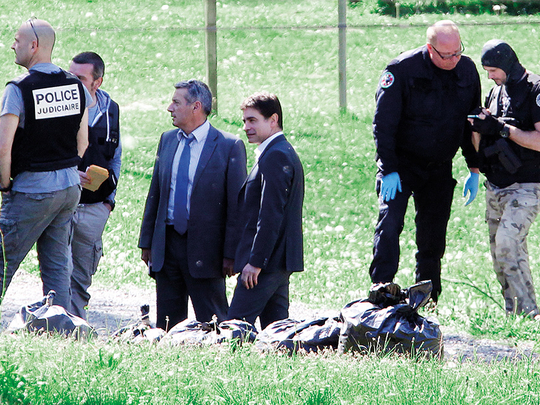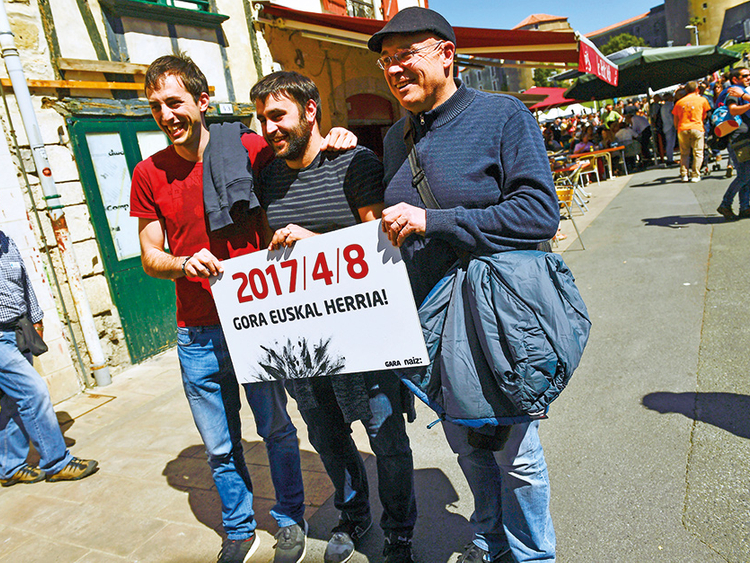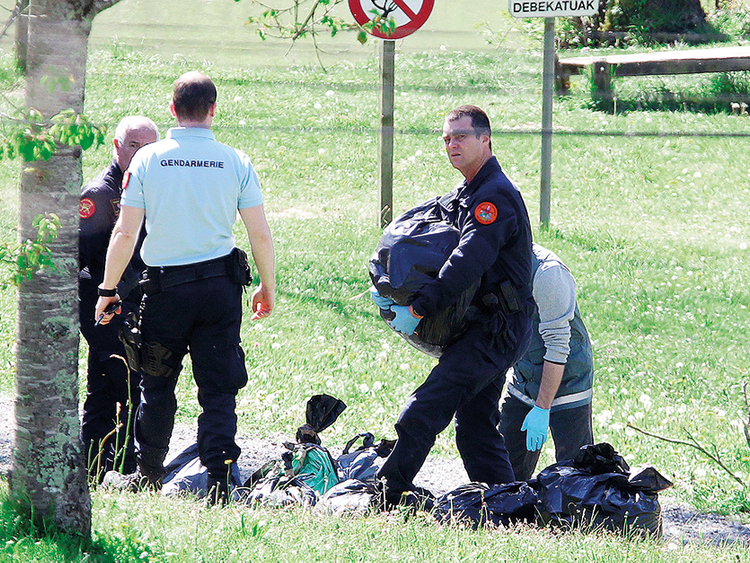
Madrid: For more than 50 years in fits and starts, ETA, the Basque separatist group, has dallied in political violence, waging a low-level campaign of terror in south-west France and north-east Spain in an attempt to win an independent homeland between the two countries.
Although the group was founded during the mid-1950s in the linguistically and culturally distinct region of northern Spain during General Francisco Franco’s dictatorship, its first recognised killing came in 1968 with the murder of an undercover police officer in San Sebastian. Since then, the group has been responsible for an estimated 800 deaths, of which 300 remain unsolved. Ironically, it was in San Sebastian on Saturday that ETA handed over files to Spanish officials detailing the decommission of their arsenal. Those files contained details of its arms, more than 3,000 kilograms of explosives, and an estimated 25,000 rounds of ammunition.
The handing over of the files is as ceremonial as it gets, given that an estimated 100 of Eta’s fighters remain opposed to its transition from what they believe is a legitimate military campaign — but which French, Spanish officials and international jurists classify as terrorism and criminality — to that of a purely political struggle.
For an organisation that has seen more than 300 of its members jailed for murder, sedition, plotting and causing bombings and carrying out the murders of mostly policemen, judicial figures and government officials on both sides of the French-Spanish border, the transition to that of a purely political entity is a difficult one to take.
Through its existence, Eta’s campaign had always been overshadowed in size, scale and news appeal by the struggle taking place over that same time frame by the Irish Republican Army, and its political wing, Sinn Fein, in trying to unite the British-ruled province of Northern Ireland within the Republic of Ireland to the south of the island.
The time of the outbreak of both conflicts in the late 1960s also reflects a shift in political activism brought about by civil rights’ movements, liberation theology in both Catholic-dominated nations, and community-based social activism emanating from the Paris Spring of 1968.
And both Eta and the IRA found former Libyan strongman Colonel Muammar Gaddafi only too willing to help supply Communist-bloc Kalashnikov AK-47s to support their political violence.
But while the IRA had a large diaspora spread around the world to fund its terror campaign combined with a sophisticated political wing in Sinn Fein to spread the message of a united Ireland to a largely sympathetic international audience, ETA remained linguistically, regionally and politically isolated.
It had the culture and language of a distinct separatist group, but no easy-to-define geographical base that was easy to recognise. It also largely failed to capture the headlines as Irish republicans did during the 1970s and 80s.
Through its lifespan, ETA’s campaign of violence failed to bring either the Spanish or French governments to the bargaining table, and both administrations insist to this day that ETA is a terrorist organisation.
British Prime Ministers, from Harold Wilson to John Major, forged either secret or open dialogue with Irish republicans at military and political levels. Sinn Fein held seats in the United Kingdom parliament in Westminster but has refused to take them — doing so would mean swearing an oath of allegiance to a British monarch who ruled the disputed province central to the republican cause. Those seats, however, conferred political legitimacy on Sinn Fein, something ETA lacked.
While the Irish peace process has been under way for two decades, it has taken ETA’s leadership the same time frame to recognise an inevitable end to its campaign of terror.
The handing of those files detailing ETA’s arms signifies the closing of one chapter of violence and the opening of another based on hope, dialogue and reconciliation.
Photographs may very well exist of those arms caches but they will likely remain hidden away for now. ETA and its disillusioned membership will not allow those images published. While ETA’s leadership says it has moved to the political forum, the images can be contrived as the defeat of its political ideology.














